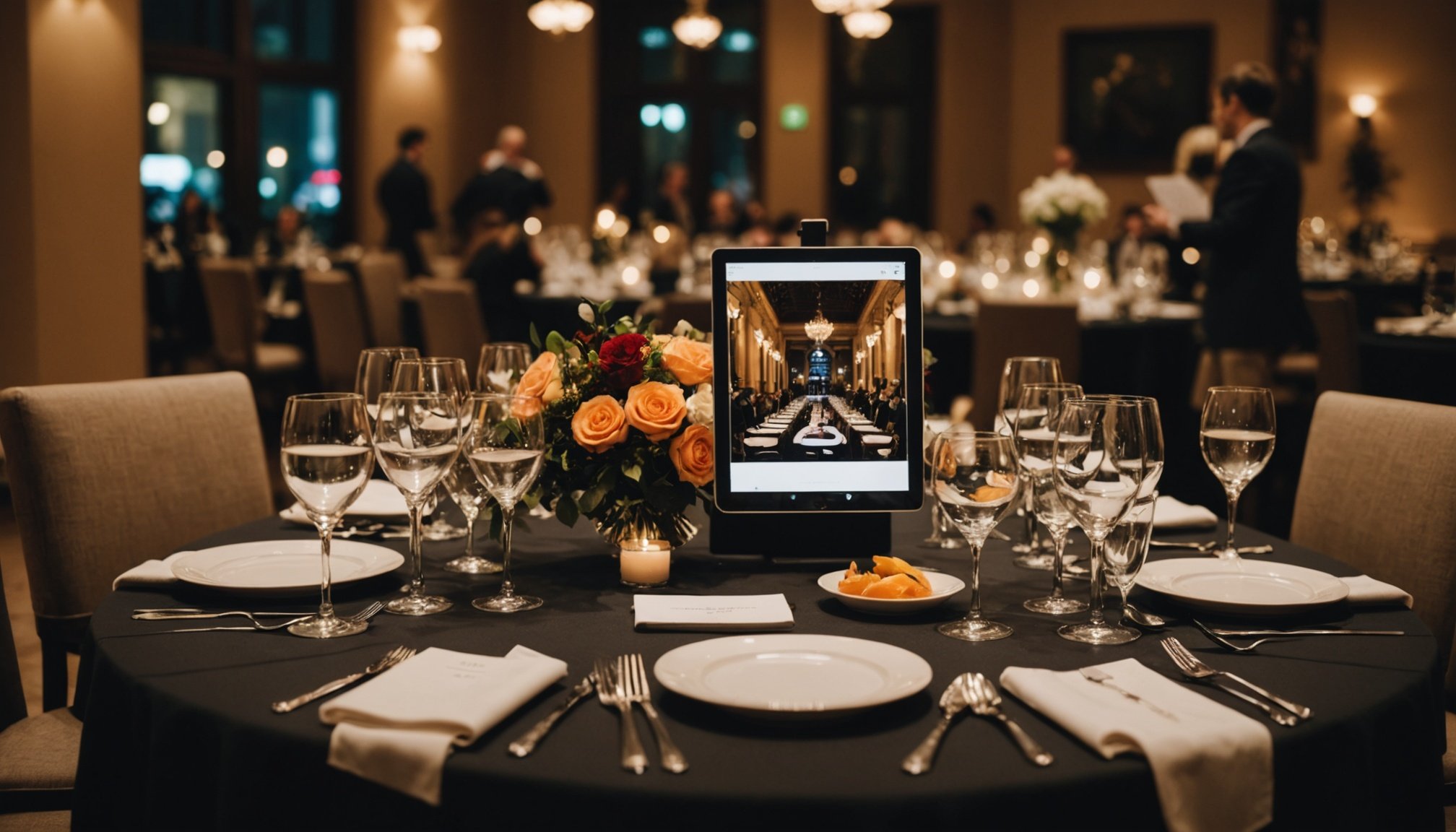Immersive event experiences can redefine how brands connect with their audiences. By engaging customers in vibrant, interactive environments, brands cultivate deeper emotional ties, altering perceptions and enhancing loyalty. Explore how innovative strategies, like those employed by Netflix and Coca-Cola, elevate customer engagement into unforgettable journeys. Discover practical tips for implementing and measuring these transformative experiences, and unlock the potential to reshape your brand narrative.
Understanding Immersive Brand Experiences
The rise of immersive brand experiences on H.stories signifies a transformative shift in how brands engage with their audiences. Such experiences are designed to fully immerse consumers in an environment or narrative that personifies the brand’s identity and values. By leveraging emotional storytelling and cutting-edge technology, these experiences create profound emotional connections, which are crucial to customer retention and loyalty. Immersive environments not only captivate audiences but also extend the time they spend interacting with a brand, enhancing the overall customer journey immersion.
Also to read : Ignite Your Client Campaigns: Leveraging AI for Superior Marketing Impact at a Sheffield Firm
Emotional connections play a significant role in these experiences, transforming passive consumers into active participants. For instance, augmented reality brand experiences offer an interactive element that switches ordinary moments into extraordinary interactions. This can be seen with brands like Toyota, which offers virtual experiences allowing customers to engage with new models before their release. Such deep engagement ensures that the brand remains top-of-mind, effectively creating memorable interactions that foster lasting consumer relationships.
The strategic use of multi-sensory elements, such as soundscapes and visuals, further enriches these engagements, offering a holistic encounter that’s as vivid as it is impactful. By focusing on the emotional and cognitive aspects of consumer behavior, brands harness the full power of storytelling through experiences, ensuring their message resonates well beyond the initial interaction.
Also to see : Creating a Comprehensive Risk Management Strategy for Manchester Financial Institutions
Integrating Technology in Immersive Marketing
Use of Virtual Reality in Brand Engagement
Virtual reality (VR) has become a primary tool in virtual reality marketing, allowing brands to create immersive technology in marketing that transports users to different worlds, breaking the boundary between reality and imagination. Companies are leveraging this by creating elaborate immersive installations for brands where consumers can interact with products. A prominent example is Toyota’s virtual world for the Aygo X Undercover, providing a hands-on engagement that fosters an intimate connection with the brand. VR experiences transform brand storytelling, making them unforgettable and fostering deeper consumer loyalty.
Augmented Reality Applications for Enhanced Shopping
Augmented reality brand experiences revolutionize shopping by enabling consumers to visualize products in their personal environments before purchasing. Furniture brands, for instance, use AR apps to let users see how items fit into their homes, a practical application of immersive technology in marketing. This approach enhances the shopping experience by combining physical and digital realities, offering a more informed decision-making process and boosting customer journey immersion.
The Impact of Innovative Technology on Customer Perception
Interactive brand engagements utilizing immersive technologies significantly alter brand perception. As customers experience engaging multi-sensory stimuli, the brand cultivates an emotional connection. This powerful strategy not only enhances consumer perception but also encourages user-generated content in brand experiences, creating organic promotion opportunities. Through these innovative methods, brands create lasting impressions, ensuring memorable customer interactions.
Strategies for Effective Experiential Marketing
Crafting Memorable Brand Narratives
Incorporating brand storytelling through experiences ensures that narratives resonate well with consumers, creating a stronger emotional connection with brands. Techniques include aligning the story with the brand’s mission and values, while ensuring authentic experiences that foster relatability and loyalty. By embedding core messages in engaging activities, brands capture interest and drive profound consumer behavior and experiences.
Utilizing Multi-Sensory Experiences to Engage Consumers
Sensory marketing techniques are pivotal in crafting immersive experiences that captivate audiences. Engaging multiple senses, such as using soundscapes in a virtual reality marketing experience or introducing unique fragrances at a pop-up event, differentiates a brand and enhances customer engagement. This multi-sensory approach heightens brand recall and elicits emotional responses, significantly impacting the customer journey.
Case Studies of Successful Experiential Campaigns
Examining experiential marketing case studies provides insight into successful strategies. Coca-Cola’s pop-up at O’Hare Airport is a prime example, where a cozy retreat with interactive brand engagements led to over 1.2 million social media shares. This illustrates the power of immersive brand experiences to create buzz and deepen audience participation. Similarly, Artechouse’s integration of virtual reality in its Spectacular Factor showcases the potential of immersive technology in marketing to draw repeat visitation and maintain high consumer interest.
Creating Immersive Installations and Events
Designing Interactive Brand Environments
When orchestrating immersive brand experiences, brands can develop engaging environments through tactical design. By integrating augmented reality brand experiences and innovative brand activation, spaces become more than just a marketing venue; they morph into hubs of immersive storytelling. Companies like H.stories excel in transforming ordinary spaces into branded visual narratives, using immersive technology in marketing for enhanced allure and authenticity in events such as product launches and showrooms.
Promoting Audience Engagement through Participation
Audience participation in brand events is crucial for creating memorable interactions. The infusion of interactive brand engagements increases retention and emotional involvement. Techniques like gamification and the power of experiences in branding enable guests to feel integral to the event, thereby amplifying their connection with the brand. Incorporating live elements via virtual reality marketing tools can lead to spontaneous social media interactions, boosting engagement beyond the event itself.
Integrating Community Elements in Live Experiences
Embedding community elements into live brand experiences allows participants to become co-creators, fostering a sense of belonging and advocacy. This approach can visualize brands’ storytelling through experiences, making them more relatable and personal. By leveraging user-generated content in brand experiences, events cultivate authentic narratives, promoting enduring emotional connections with participants. Utilizing data insights ensures these elements resonate effectively with diverse audience demographics.
Measuring the Effectiveness of Immersive Strategies
Key Performance Indicators for Experiential Marketing
Understanding the success of immersive brand experiences is crucial. Key performance indicators (KPIs) include engagement metrics such as duration of interaction and social media shares. Experiential marketing strategies often rely on emotional connection with brands and the responses they elicit. Metrics tracking the emotional branding tactics help assess how deeply these connections are forged. By focusing on these areas, brands can better understand the effectiveness of experiential marketing.
Tools for Evaluating Effectiveness of Immersive Campaigns
Several tools are available to measure the ROI of immersive experiences. Technology such as immersive analytics platforms allows brands to gather and analyze data from these experiences. By evaluating user engagement and purchase behavior, insights can be derived to optimize interactive brand engagements. These tools provide detailed feedback to enhance customer journey immersion and improve cross-channel experiential marketing efforts, which ultimately impact consumer behavior and experiences.
Creating a Feedback Loop through Customer Data
Establishing a feedback loop through user-generated content in brand experiences is essential. Gathering and analyzing this data can refine immersive installations for brands and ensure memorable brand interactions. By utilizing audience participation in brand events, companies can align their strategies with consumer expectations, leading to optimized brand touchpoints and sustained engagement.
Future Trends in Immersive Brand Experiences
Anticipated Developments in Immersive Marketing Technology
The future of immersive brand experiences is poised to be shaped by technological advancements that enhance customer engagement. As immersive technology in marketing evolves, brands are turning to virtual reality and augmented reality to craft unforgettable experiences. This innovation allows for greater personalization and deeper interaction, transforming the customer journey into a multi-sensory experience.
The Rise of Personalization in Brand Experiences
Consumers increasingly expect personalized experiences in marketing. By leveraging data and immersive technologies, brands can tailor interactions to fit individual preferences. This shift not only improves the emotional connection with brands but also fosters brand loyalty. Innovative brand activation strategies, like live events and interactive installations, engage consumers on a personal level, driving meaningful user-generated content.
Sustainability Considerations in Experiential Marketing
Incorporating sustainability into experiential marketing strategies is becoming as essential as creating impactful narratives. Brands are now designing immersive installations with sustainable practices in mind. This approach aligns with evolving consumer values, reinforcing the importance of authentic experiences that resonate with the audience. Creating immersive retail environments that consider ecological impacts can enhance brand perception and loyalty.
Collaboration and Co-Creation in Brand Experiences
Partnering with Influencers for Greater Reach
Incorporating influencer partnerships can significantly enhance interactive brand engagements. Leveraging influencers for brand experiences helps extend the brand’s reach and authenticity. Their influence can transform traditional marketing into a vibrant narrative, engaging a wider audience. For instance, when influencers share experiential marketing strategies through their platforms, their personal endorsements weave seamlessly into the brand story, encouraging an emotional connection with their followers. Thus, brands can achieve substantial growth in consumer reach and emotional branding tactics by collaborating creatively with these digital personalities.
Importance of User-Generated Content in Experiences
User-generated content in brand experiences plays a pivotal role in crafting genuine consumer connections. By encouraging audiences to share their experiences, brands cultivate a community atmosphere. These organic interactions not only amplify the brand message but also enhance consumer behavior and experiences. When audiences engage through shared posts or reviews, it creates a ripple effect, reinforcing the brand storytelling through experiences.
Collaborating with Consumers for Innovative Ideas
Co-creation in brand experiences taps into the creativity of consumers, elevating interactive brand engagements. Involving customers in the development process fosters a sense of community and loyalty. This not only provides companies with fresh insights but also ensures the end product resonates with its audience. Encouraging consumer participation in brainstorming sessions or product testing can lead to breakthrough experiential campaigns for brand loyalty.











